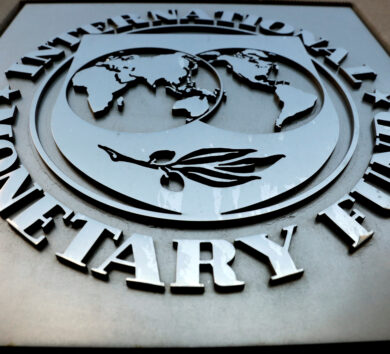
Measure designed to drive global inflation fight

Durrant Pate/ Contributor
Global central banks continued raising interest rates last week in a fight against high inflation, which continues to keep pace.
Major central banks across the globe have hiked interest rates as they seek to tame the inflation monster.
They have stepped up their fight against inflation, unleashing another 525 basis points (bps) of hikes last week in a pivotal week in which policymakers sustained their focus on bringing inflation back within their respective targets.
The central banks hiking rates include the US Federal Reserve (75bps), Bank of England (50 bps), Bank of Indonesia (50 bps), Sweden (100 bps), Philippines (50 bps), South African Reserve Bank (75 bps), Swiss National Bank (75 bps), and Norges Bank (50 bps). The US Federal Reserve lifted its benchmark interest rate by 75bps to a range of 3.00 per cent- 3.25 per cent.

This came after the US Consumer Price Index rose 8.3 per cent in August (see Figure 1) from a year earlier, falling only marginally compared with 8.5 per cent in July. The Bank of England and other central banks also raised rates in a similar fashion.
Details of interest rate hikes
In an attempt to combat rising prices, the Bank of England hiked interest rates by 50 bps to 2.25 per cent on September 22, less than the market expectation of 75 bps. UK’s point to point inflation edged down slightly to 9.9 per cent in August, from the 10.1 per cent recorded in the 12 months to July.
Bank Indonesia raised rates by 50 basis points to 4.25 per cent. Sweden raised rates by 100bps to 1.75 per cent and warned of more to come over the next six months as it gets to grips with surging inflation. The Philippines’ raised by 50 basis points to 4.25 per cent.
The South African Reserve Bank hiked its repo rate by 75bps to 6.25 per cent from 5.5 per cent. The Swiss National Bank (SNB) raised its policy rate on by another 75bps from -0.25 per cent to 0.5 per cent.
In other regions where inflation continues to breach central banks’ target range, Indonesia, Sweden, the Philippines, and South Africa, rates were lifted. A 75bps increase to 0.5 per cent by Switzerland’s Central Bank ended the era of below-zero interest rates in Europe.

Norway, the first big developed economy to kick off a rate-hiking cycle last year, also raised its benchmark rate by 50bps to 2.25 per cent owing to elevated inflation, while also stating that future hikes could be more gradual. Norway could be the first central bank to signal that the interest rate peak is near.
Supply chain pressures for driving inflation
Among the factors cited for driving inflation is the fact that supply chain pressures elevated and so global central banks have sustained their aggressive rate hikes in a bid to slow consumption and quickly reduce the pace of inflation. Inflation rates range from Switzerland’s 3.5 per cent to nearly 10 per cent in the United Kingdom, which while easing, have remained stubbornly higher than their target ranges.
There has been a rebound in demand since the pandemic subsided and economies reopened but with supply chain disruptions and high fuel and other commodities prices, have driven global consumer prices higher. However, there has been some improvements in recent weeks with oil prices at their lowest levels since January 2022 on fears of a recession and other drivers of inflation are showing signs of easing. In spite of the easing inflation still remains elevated.
Global food price index falling
The UN Food and Agriculture Organization’s global food price index has fallen for five consecutive months, but as at August, it remains 23 per cent above its value a year ago (138.0 points). This is due to large year-on-year increases in the prices of cereals and vegetable oil, as well as dairy products.
Further, while there are some signs of easing in supply chain conditions, material shortages, trucking and shipping capacity restraints continue to keep oil tumbling as much as 5.7 per cent to US$78.73 a barrel on September 23, the lowest intraday level since January 11.
In August, the Global Supply Chain Pressure Index run by the New York Federal Reserve fell for the third straight month in a row, taking it to the lowest level since January 2021. The bank’s index, which incorporates data on shipping costs, delivery times, backlogs and other statistics into a single measure, is down 57 per cent since its peak almost 18 months ago.
However, it still remains significantly above levels seen just before the start of the pandemic.







Comments